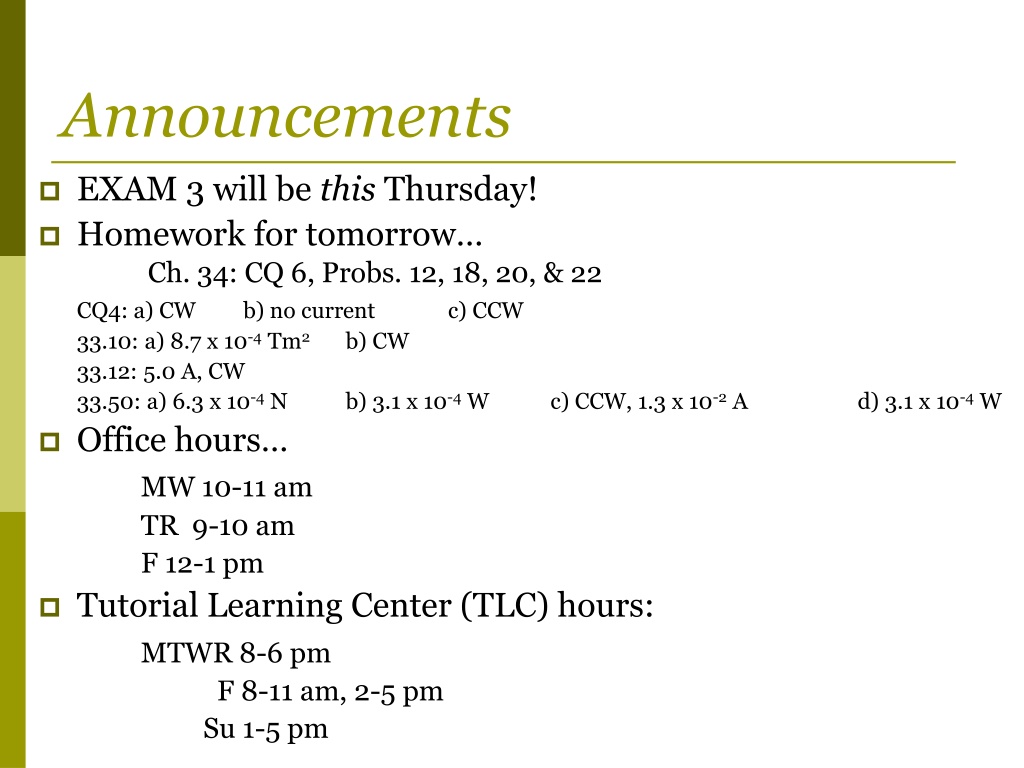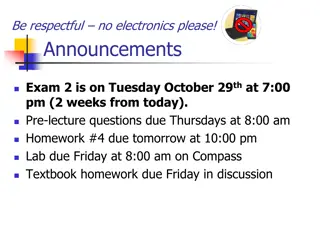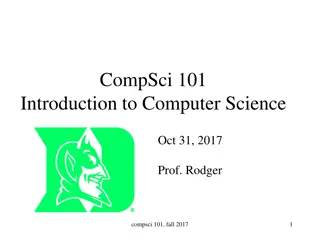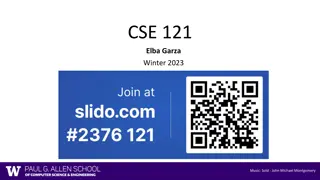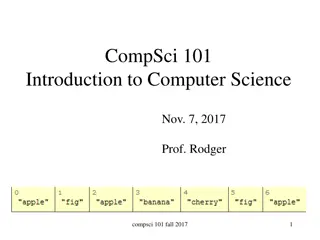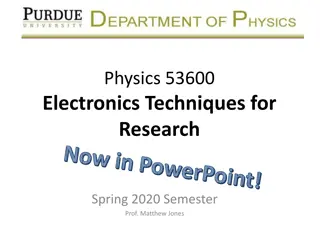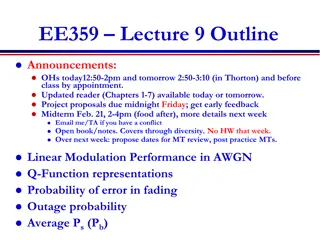Announcements
Faraday's speculation connecting light to electricity and magnetism led to Maxwell's groundbreaking understanding of light as an oscillation of the electromagnetic field. Maxwell's equations revolutionized our comprehension of electromagnetic waves, revealing their ability to exist at any wavelength, not just visible light. This chapter delves into the properties of electromagnetic waves, highlighting their speed in a vacuum and the relationship between the electric and magnetic fields.
Download Presentation

Please find below an Image/Link to download the presentation.
The content on the website is provided AS IS for your information and personal use only. It may not be sold, licensed, or shared on other websites without obtaining consent from the author.If you encounter any issues during the download, it is possible that the publisher has removed the file from their server.
You are allowed to download the files provided on this website for personal or commercial use, subject to the condition that they are used lawfully. All files are the property of their respective owners.
The content on the website is provided AS IS for your information and personal use only. It may not be sold, licensed, or shared on other websites without obtaining consent from the author.
E N D
Presentation Transcript
Announcements EXAM 3 will be this Thursday! Homework for tomorrow Ch. 34: CQ 6, Probs. 12, 18, 20, & 22 CQ4: a) CW b) no current 33.10: a) 8.7 x 10-4Tm2 33.12: 5.0 A, CW 33.50: a) 6.3 x 10-4N Office hours MW 10-11 am TR 9-10 am F 12-1 pm Tutorial Learning Center (TLC) hours: MTWR 8-6 pm F 8-11 am, 2-5 pm Su 1-5 pm c) CCW b) CW b) 3.1 x 10-4W c) CCW, 1.3 x 10-2A d) 3.1 x 10-4W
Chapter 34 Electromagnetic Fields & Waves (EM Waves & Properties of EM Waves)
34.5: Electromagnetic Waves Faraday speculated that light was connected to electricity & magnetism. James Clerk Maxwell, using his electromagnetic (EM) field equations, was the 1st to understand that light is an oscillation of the EM field. Maxwell s equations predict that: EM waves can exist at ANY wavelength, NOT just at the wavelengths of visible light. 2. All EM waves travel in a vacuum with the SAME speed, the speed of light! 1.
34.5: Electromagnetic Waves This figure shows the E-field & B-field at points along the x-axis, due to a passing EM wave. The oscillation amplitudes are related by:
34.5: Electromagnetic Waves The figure shows the fields due to a plane wave, traveling to the right along the x-axis. The fields are the same everywhere in any yz-plane perpendicular to x. This is a small section of the xy-plane, at a particular instant of time.
34.5: Electromagnetic Waves This figure shows the fields due to a plane wave, traveling toward you, along the x-axis. If you watched a movie of the event, you would see the E-field and B-field at each point in this plane oscillating in time, but always synchronized with all the other points in the plane.
34.5: Electromagnetic Waves Maxwell s field equations predict EM waves with wave speed:
34.5: Electromagnetic Waves Maxwell s field equations predict EM waves with wave speed:
34.5: Electromagnetic Waves Maxwell s field equations predict EM waves with wave speed: Notice: 0 and 0 were determined by the size of E and B due to point charges and have nothing to do with waves! Maxwell s eqns predict that E- & B-fields can form a self- sustaining EM wave, if that wave travels at the above speed!
34.6: Properties of Electromagnetic Waves ALL EM waves must satisfy four basic conditions: The E-fields and B-fields are perpendicular to the direction of propagation. The EM wave is a transverse wave. 1. 2. The E- and B-fields are perpendicular to each other in a manner such that is in the direction of the propagation. 3. The wave travels in vacuum at a speed of 4. at any point on the wave.
Quiz Question 1 An EM plane wave is coming toward you, out of the screen. At one instant, the E-field looks as shown. Which is the wave s B-field at this instant? E. The B-field is instantaneously zero.
Quiz Question 2 In which direction is this EM wave traveling? Up. 1. 2. Down. 3. Into the screen. 4. Out of the screen. These are not allowable fields for an EM wave. 5.
Energy & Intensity The energy flow of an EM wave is described by the Poynting vector, defined by Notice: The Poynting vector points in the direction in which the EM wave is traveling! SI units?
Energy & Intensity The energy flow of an EM wave is described by the Poynting vector, defined by Notice: The Poynting vector points in the direction in which the EM wave is traveling! SI units? S measures the instantaneous rate of energy transfer per unit area of the wave.
Energy & Intensity The Poynting vector is a function of time, oscillating from 0 to Smax and back to 0 twice during each period of the wave s oscillation. Of more interest is the average energy transfer, averaged over one cycle of oscillation, which is the wave s intensity. The intensity of the EMwave is
Energy & Intensity The Poynting vector is a function of time, oscillating from 0 to Smax and back to 0 twice during each period of the wave s oscillation. Of more interest is the average energy transfer, averaged over one cycle of oscillation, which is the wave s intensity. The intensity of the EMwave is
Energy & Intensity The intensity of a wave fall off with distance. If a point source with power Psource emits EM waves uniformly in all directions, the EM wave intensity at distance r from the source is
